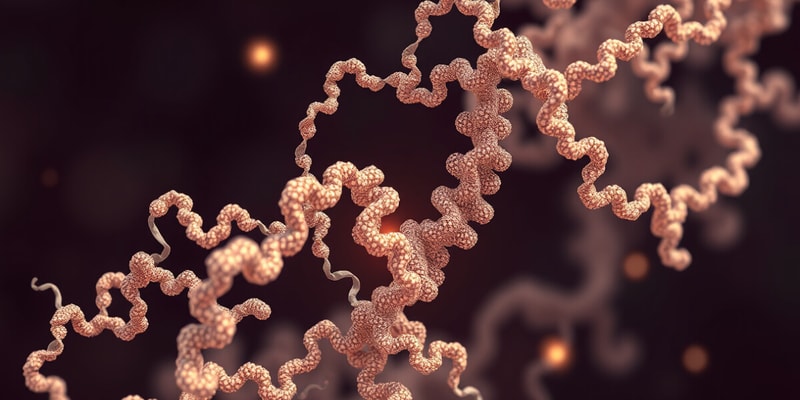Podcast
Questions and Answers
Which type of R group is histidine classified as based on its charge at pH 7?
Which type of R group is histidine classified as based on its charge at pH 7?
In an amino acid with a predominantly negatively charged R group, at what pH would it carry a net zero charge?
In an amino acid with a predominantly negatively charged R group, at what pH would it carry a net zero charge?
When glycine moves toward a positive electrode, what is its likely charge?
When glycine moves toward a positive electrode, what is its likely charge?
Which R group is cysteine classified as based on its ability to form disulfide bonds?
Which R group is cysteine classified as based on its ability to form disulfide bonds?
Signup and view all the answers
At what pH would an amino acid with an aromatic R group carry a net zero charge?
At what pH would an amino acid with an aromatic R group carry a net zero charge?
Signup and view all the answers
What type of R group would typically have a net positive charge at pH 7?
What type of R group would typically have a net positive charge at pH 7?
Signup and view all the answers
Study Notes
### Histidine's R Group Charge at pH 7
- Histidine is classified as a positively charged or basic R group at pH 7
Negatively Charged R Group at Net Zero Charge
- An amino acid with a predominantly negatively charged R group would carry a net zero charge at its isoelectric point, which is typically near the pKa of the carboxyl group in the side chain.
Glycine's Charge When Moving Towards Positive Electrode
- Glycine is zwitterionic at neutral pH, meaning it has a positive charge on the amino group and a negative charge on the carboxyl group. When glycine moves towards a positive electrode, it indicates a net positive charge.
Cysteine's R Group Classification
- Cysteine is classified as a polar, uncharged R group due to its sulfhydryl group (-SH), which can form disulfide bonds with another cysteine residue.
Aromatic R Group at Net Zero Charge
- An amino acid with an aromatic R group would carry a net zero charge at its isoelectric point, which is specific to each amino acid and dependent on the pKa values of its ionizable groups.
Positively Charged R Group at pH 7
- An R group typically carries a net positive charge at pH 7 if it has basic side chains like lysine and arginine, which are protonated at physiological pH.
Studying That Suits You
Use AI to generate personalized quizzes and flashcards to suit your learning preferences.
Description
Test your knowledge on the key features of polar, uncharged R groups, the importance of cysteine in forming disulfide bonds, and characteristics of aromatic R groups. Learn about their properties and interactions.



